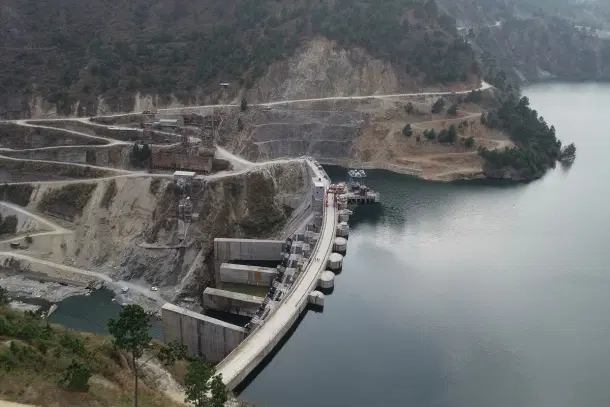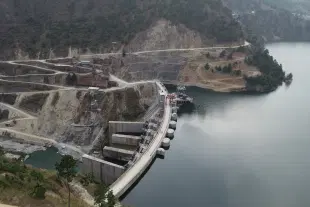News Brief
How India Is Planning To Mitigate Potential Flood Risks From China—All About Siang Upper Multipurpose Project
Arun Dhital
Jun 24, 2025, 12:32 PM | Updated 12:32 PM IST
Save & read from anywhere!
Bookmark stories for easy access on any device or the Swarajya app.


The Arunachal Pradesh government has renewed its push for the proposed Siang Upper Multipurpose Project (SUMP), positioning the 11,000 MW hydroelectric dam as a strategic measure to counter China’s upstream activities on the Brahmaputra.
Northeast India is confronting a new crisis as surging "artificial floods" are blamed on water releases from China’s upstream dams.
Analysts warn that China’s vast hydropower construction on the Yarlung Tsangpo (the Brahmaputra’s Tibetan section) would enable controlled flooding downstream, raising the risk of flash floods across Arunachal Pradesh, Assam, and beyond.
“The SUMP, with an estimated installed capacity of 11,000 MW, is not just about generating power, but also about maintaining the natural flow of the Siang river (Brahmaputra) and mitigating potential flood risks from water releases by China,” Chief Minister Pema Khandu said earlier.
The state Cabinet, in a special meeting last week, approved a decade-long hydropower development plan and emphasised the importance of building consensus around SUMP.
The project, declared a national initiative in 2008, is now being revived in light of China’s plans to construct a 60,000 MW dam on the Yarlung Tsangpo (the upper stream of the Brahmaputra).
Echoing the strategic rationale, Brahmaputra Board chairman Dr Ranbir Singh said on Friday (20 June) that the dam India is building on the Siang river will help reduce the impact of China’s ‘Great Bend’ dam.
Despite the high-level backing, the project has faced sustained opposition from local communities, environmental groups, and scientists, who fear large-scale displacement and ecological damage.
Residents in Siang, East Siang, and Upper Siang districts have resisted the pre-feasibility survey, prompting the deployment of central forces for security.
The state government has also cleared plans for resettlement infrastructure, including “future-ready alternate towns” and a “necklace road” above the likely submergence zone.
A committee has been formed to assess compensation and rehabilitation for affected families.
While pitched as a national security and flood mitigation measure, the SUMP remains one of India’s most contested dam proposals.
Also Read: Electric Passenger Plane Completes First Flight In US, Paving Way For Greener, Cheaper Air Travel





